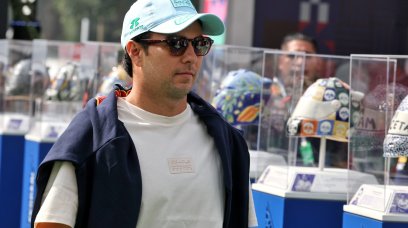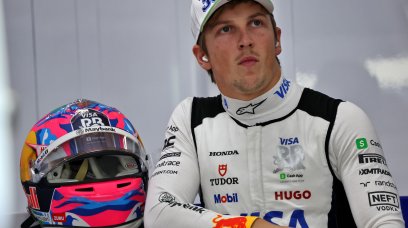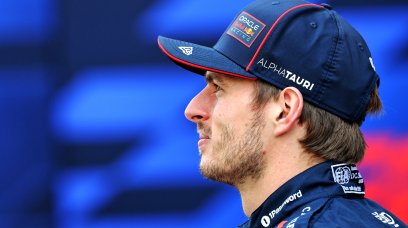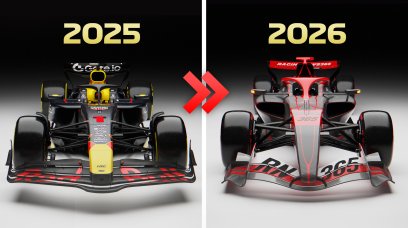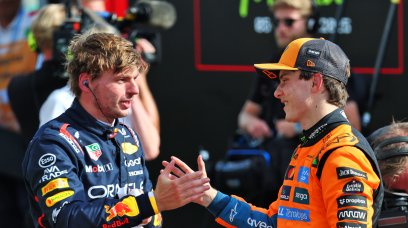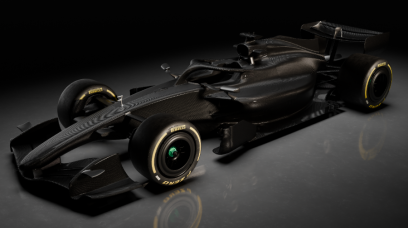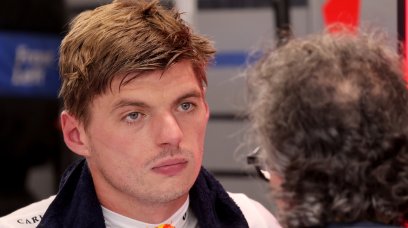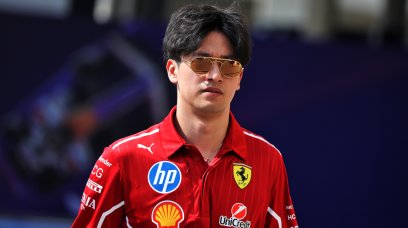Ferrari and McLaren show early promise
Given that Red Bull and Mercedes remained locked in a title battle throughout 2021, it's perhaps no surprise that neither of the two teams looked completely assured over the course of the three days in Barcelona – unlike Ferrari and McLaren. Indeed, the Scuderia were metronomic as Charles Leclerc and Carlos Sainz consistently kept the F1-75 at or near the sharp end of the timing screens. Not only was the pace good, but their reliability was noteworthy too, with the team putting in the highest mileage (439 laps) of the entire grid over the course of the test. McLaren weren't far off, either. Lando Norris set the pace on the opening day, while Daniel Ricciardo also adjusted to the MCL36 with aplomb on Thursday to go quickest during the morning session. Although Red Bull and Mercedes upped their pace on the final day, both teams encountered reliability issues that compromised their tests. Sergio Perez had gearbox trouble on Thursday, while Lewis Hamilton suffered a sensor failure that ruined his morning on the same day. Certainly, the pace of F1's two most historic teams has caught the eye of George Russell. "They [McLaren and Ferrari] seem to have things well under control and they're on top of everything. They look very strong on low fuel, high fuel, and with the tyre management. "Who knows? We all know that we're on different programmes, but we definitely know from the average of all of the different runs that we're behind them at the moment."
F1 engineers are incredibly talented
Given that F1 is entering a revolutionary new technical era, one would have been forgiven for thinking that the Barcelona test would be littered with mechanical failures and constant car issues. But, surprisingly, the red flag remained a conspicuous absentee on the very first day of pre-season testing, without a single on-track stoppage interrupting the flow of the day. While Haas and Alfa Romeo encountered some issues with their floors, it's testament to the sheer engineering talent and strength of each team that, despite the biggest single-year car changes since the end of 2008, the cars mostly ran like clockwork. It took until near the end of the second morning before the first failure, as Red Bull encountered a gearbox issue. But it wasn't until the final day that there were numerous interruptions. With the teams starting to push a little harder, Alpine suffered a catastrophic hydraulic issue on Friday morning that ruled them out of the rest of the day. Alfa Romeo also had some reliability struggles, but Haas fared the worst overall. After floor issues on the first day, a fuel pump issue on the second, and an undefined "leak" on the third day that truncated their test, the team that threw away 2021 to focus on this season will need to dig deep to bounce back for the Bahrain test.
Porpoising is a new (returning) word in F1's dictionary
An unusual phenomenon reared its head over the course of the three days of running in Barcelona, with some of the cars 'bouncing' their way down the track on the high-speed straights. The official name for this is 'porpoising', and is a symptom of the switch to a ground effect philosophy. As the cars build up speed and the floor generates downforce, the car gets sucked closer to the ground. However, this increases the pressure difference between the upper surfaces of the car and the underside. As the downforce increases as the ground effect escalates, there reaches a point where the air stalls. At this point, the aero load decreases, causing the car to spring back up, and the rapid cycle begins again. "I think that most of us at least underestimated the problem – on track, we're bouncing more than expected," Ferrari boss Mattia Binotto told media, including RacingNews365.com , on Thursday. "I'm pretty sure that, at some stage, each team will get to the solution. How long it will take, I think that the ones that get there sooner will have an advantage at the start of the season." It's an issue that affected the ground effect cars of the late 1970s and early 1980s and, despite looking quite amusing, is quite a safety concern – particularly if it happens through a fast, sweeping corner. The teams will thus have to find solutions for the problem , and fast...
Despite this, overtaking looks set to be easier
The litmus test of the new regulations is whether the 2022 cars can follow each other more closely and, in turn, find more overtaking opportunities. After the three days in Barcelona, the consensus appears to be that the amount of turbulence coming off a car in front is significantly reduced, although not eradicated entirely. "I can tell you I already felt some differences – it is pretty obvious already," Carlos Sainz commented at the end of Thursday's running. "I'm relatively positive about it [and] optimistic that it's going in the right direction." Alex Albon, who returns to racing this year after a season on the sidelines with Red Bull, also reported that following appears to be much easier, after spending a few laps tucked up behind AlphaTauri's Pierre Gasly. "The initial feeling feels good," he said of the situation. "Obviously, I haven't raced in a while, so it's a bit harder on that side. But I was surprised how close I could stay through Turn 2 and Turn 3. [I was] almost under-driving because I was expecting worse, but the initial feeling is positive." Russell, stepping out of the Mercedes W13, was less committal, but also explained that he could feel an improvement compared to the old cars. "I have [followed another car] but it's difficult to say for now," he remarked. "We're obviously not in race mode; we're not going to go crazy when we're right up behind cars. I'd say it is an improvement. How substantial? We'll have to wait to find out."
The mind games never stop in F1
As ever, testing has seen all the usual mental tricks and downplaying of expectations between all the teams. As explained above, Russell feels Mercedes are on the back foot compared to the likes of Ferrari and McLaren while, at McLaren, both Norris and Ricciardo have done their best to convince everyone that the MCL36 isn't actually all that great. "Now we're P1 and everyone's gonna think we're gonna win the race, but no chance..." Norris joked after topping the times on the first day. Meanwhile, Ricciardo said: "I don't think Mercedes and Red Bull have really done anything, shown any cards yet, so I don't really look [into it] too much. "Ferrari, I think they look solid, they look consistently good. But yeah, I'm not trying to read too much into it yet." At the other end of the spectrum, Sainz has decided to try frightening the other teams as he claimed: "We are nowhere near to the limit of the car, or finding where the performances is, but we're doing laps and we're completing them nicely." Despite Ferrari consistently impressing, he said: "With my car, just by adding fuel or taking out fuel, I can go three or four seconds faster or slower. "Where do I stand in the three-to-four-second window? If I stand in the middle, where all the others stand is impossible to predict..." Who is telling the truth? Who is trying to put a brave face on things? Only time will tell...
Most read
